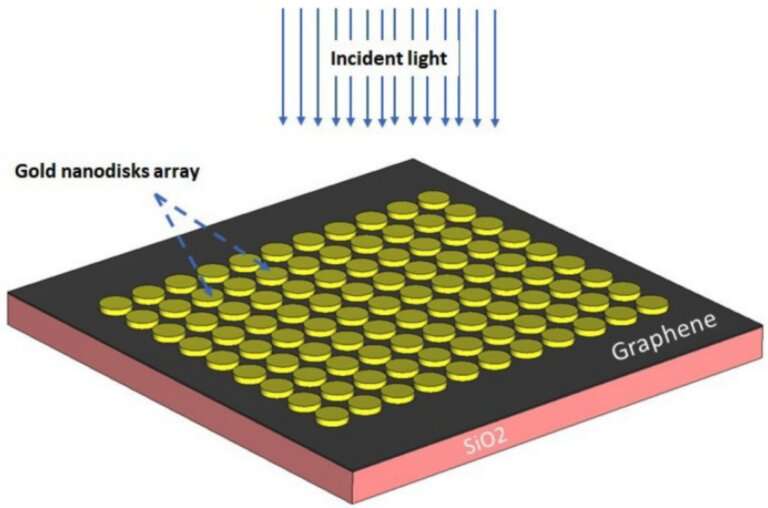
One avenue for developing new COVID tests is to study the optical properties of coronaviruses and how they differ from other particles in our blood. Image credit: Shutterstock
Sticking swabs up our noses and throats to confirm or deny whether we have the coronavirus — nearly all of us have done it multiple times over the past few years.
The methods used to detect and prevent the spread of the virus are the same worldwide, either:
- An expensive, time-consuming but very accurate PCR method to detect viral DNA in our mucous membranes, or
- The simpler, faster method only shows if we have developed antibodies against the virus.
ultra-fast detection
However, both approaches have their weaknesses. The PCR method is expensive and time-consuming, and the antibody method doesn’t tell us anything about whether we actually have the virus in our bodies. Therefore, a simple and affordable virus detection method that provides rapid results would be helpful.
Now, researchers from NTNU, Oslomet and Tabriz University of East Azerbaijan have demonstrated a method for detecting coronaviruses in blood samples using nanosensors.
“A lot of research has focused on finding ways to quickly isolate infected people, which can break the chain of infection. Nanosensors have attracted a lot of attention because of their unique properties, as they can detect particles such as viruses ultra-fast,” says Amir Maghoul. . He is a researcher and lead author of the article “An Optical Modeling Framework for Coronavirus Detection Using Graphene-Based Nanosensor”. When he started working, he was a postdoctoral researcher at Normal University.
The first step in developing individual nanosensors for coronaviruses is to identify the optical properties that distinguish coronaviruses from other particles in our blood.
NTNU physics professor Ingve Simonsen explains. Most people see the coronavirus pictured as a round core or sphere with red “spikes” or sticking out stems. “We wanted to see what role the length and size of these ‘spikes’ play in the way cells reflect light, and whether the size of the nucleus matters,” Simonson said.
Substitute resonance
To find answers to their questions, the researchers used mathematical models. The optical behavior of viruses—that is, how virus cells reflect light in resonance—was simulated and analyzed across the entire spectrum.
“We observed that the reflectance varies with the length of the spike protein. As the spike grows, the reflectance decreases while the resonance shifts to higher wavelengths,” Simonson said.
When the researchers varied the size of the viral core in the model, they observed the same response. The width of the spike protein had less effect on how light was reflected. In this way, the researchers could find out in which part of the wavelength spectrum the coronavirus differs from other particles in the blood.
“At certain wavelengths, we get different optical responses depending on whether the virus is present. We call this the coronavirus optical signature,” Simonson said.
“We know that the optical properties of particles change depending on their environment. If they’re in water or in a vacuum, if several particles are next to each other, or if the surface is covered with a thin layer of another substance, they behave differently. will be different”

Nanomaterial graphene used in new COVID testing method.Image credit: Norwegian University of Science and Technology
Pregnancy Test Example
The first person to describe in general terms how spherical particles reflect light waves was the German scientist Gustav Mie in 1908.
“It is well known that ordinary light is made up of a range of wavelengths. This is what we see when we observe a rainbow or light passing through a glass prism. The light hits water molecules in the atmosphere or in the prism and reflects off various wavelengths of light, which we see as for the spectrum of colors,” Simonson said.
Mie shows how small spheres or nuclei respond to light differently.
“For example, small metal particles have a very strong optical response. This property is used in certain types of pregnancy tests, which measure the optical response to small gold particles,” Simonson said.
“The hormones you’re looking for in your urine — which are only present if you’re pregnant — collect on the surface of the gold particles on the test stick and change the resonant frequency of the particles. The result is a color change to blue, which indicates you’re pregnant.”
rose painting example
Another example of how small particles respond to light can be seen in stained glass, such as the large rose window in Nidaros Cathedral. The intense reds, blues, and greens are all the result of optical reactions from the metal particles used in the glass. And it is this property that can be used to detect coronaviruses in blood samples.
“What you do is you put a thin network of cylindrical gold particles on top of a very thin layer of graphene. Graphene is a nanomaterial with many fascinating properties, including the fact that it conducts electricity well with very little loss. ”
When blood containing the coronavirus passes over gold particles, the resonant frequency of the particles changes, which in turn generates an electromagnetic field. This field sets a current in the sensor that can be easily measured.
“By studying the current profile for a specific frequency range of incident light, we can determine whether the blood contains coronaviruses,” Simonson said.
The great potential of nanotechnology
Nanosensors have the potential to become extremely sensitive. Amir Maghoul explained that the “smart” graphene material in the nanodisks acts as an amplifier.
“Nanotechnology has not been used before for this type of sensor, so this development is new technology. What we have done here is create the first optical framework to detect coronaviruses and show how the virus behaves in the spectrum,” Maghoul said .
The next step now is to establish a company that can develop a prototype nanosensor lab.
“We need to raise funds so we can continue to develop a universal sensor. The collaboration between NTNU and Oslomet shows that we have facilities with great potential to develop and produce such nanosensors for biomedical use, if this This job is financially supported,” Maghoul said.
More information:
Amir Maghoul et al., An optical modeling framework for the detection of coronaviruses using graphene-based nanosensors, nanomaterials (2022). DOI: 10.3390/nm 12162868
Provided by Norwegian University of Science and Technology
quote: Super-quick COVID Tests Using New Technology (2023, Jan 18), Retrieved Jan 18, 2023 from https://phys.org/news/2023-01-super-quick-covid-technology.html
This document is protected by copyright. Except for any fair dealing for private study or research purposes, no part may be reproduced without written permission. The content is for reference only.